As a passionate home baker and chocolate lover, I’ve had my fair share of kitchen mishaps.
One of the most disheartening experiences is opening a long-anticipated bar of chocolate, only to find a fuzzy, colorful surprise waiting for me.
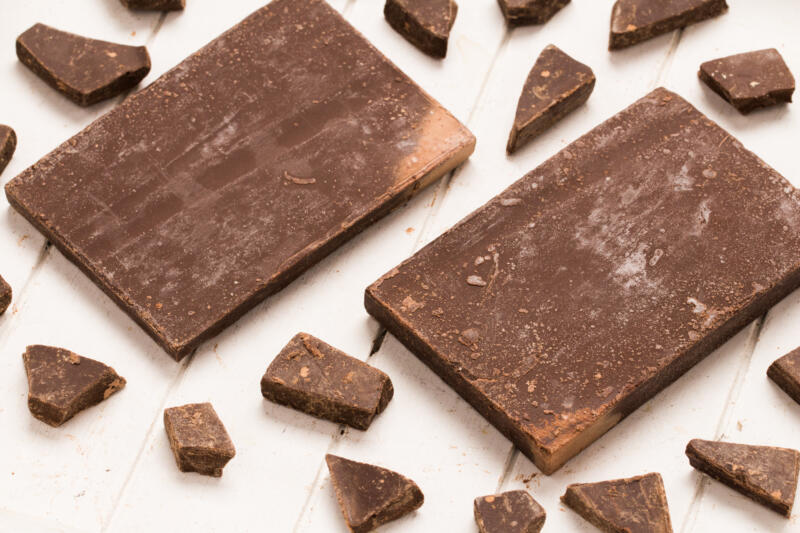
Yes, I’m talking about mold on chocolate.
It’s a sight that can turn even the sweetest tooth sour. But fear not, fellow chocolate enthusiasts!
In this article, we’ve explored everything you need to know about this pesky problem, from identifying different types of mold to understanding how it forms and, most importantly, how to prevent it.
In this article:
Types of Mold on Chocolate
When it comes to the types of mold on chocolate, there are several varieties that can make an unwelcome appearance.
The most common types include:
- Penicillium
- Aspergillus
- Cladosporium.
Each of these molds has distinct characteristics and appearances that can help you identify them.
Penicillium is often green or blue and has a fuzzy texture.
Aspergillus, on the other hand, can be a variety of colors, including green, yellow, or black, and also has a fuzzy texture.
Cladosporium is typically dark green to black and has a velvet-like texture.
In addition to these types, molds can appear in other colors, such as white, yellow, or even pink.
They can have a variety of textures, from fuzzy to slimy, depending on the type of mold and the conditions in which it’s growing.
Common Causes of Mold on Chocolate
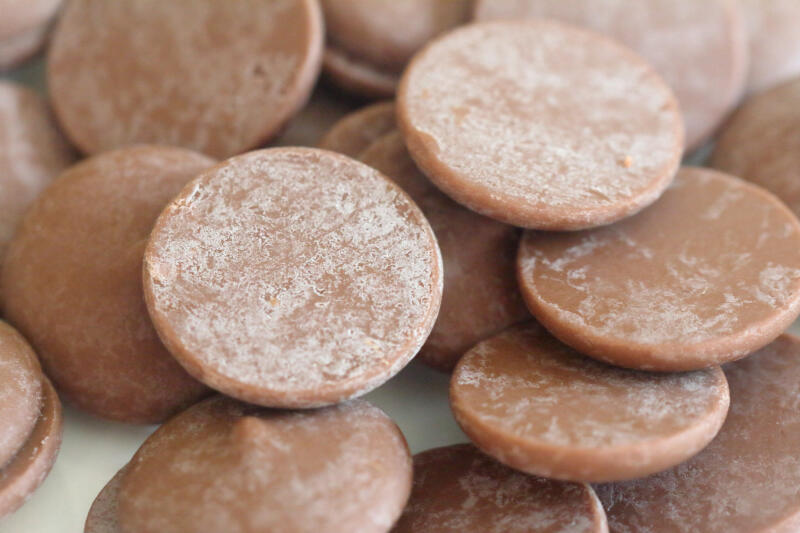
Before we delve into the specific causes of mold on chocolate, it’s important to understand that mold is a type of fungus that thrives in certain conditions.
These conditions include a source of food (like our beloved chocolate), warmth, and moisture.
Now, let’s explore how temperature, humidity, and the quality of ingredients can contribute to mold growth on chocolate.
1. Temperature and Humidity
Temperature and humidity play a significant role in mold growth on chocolate.
High humidity creates a hospitable environment for mold, as it provides the moisture that mold needs to grow.
Fluctuations in temperature can also lead to condensation, causing moisture to build up on the surface of the chocolate, which can then lead to mold growth.
To prevent mold growth, it’s crucial to store chocolate in a cool, dry place.
The ideal temperature for storing chocolate is between 60-70°F (15-21°C), and the relative humidity should be less than 50%.
2. Poor Quality Ingredients
The quality of ingredients used in chocolate can also impact the growth of mold.
Cheap ingredients often have a higher moisture content, making them more susceptible to mold growth.
For example, budget chocolates may use lower-quality fats or sweeteners, which can contribute to increased moisture content.
Using high-quality ingredients is one way to reduce the risk of mold on chocolate.
Superior ingredients are typically processed in a way that reduces their moisture content, making them less likely to contribute to mold growth.
So, not only does using the finest ingredients result in better tasting chocolate, but it can also help keep your chocolate mold-free!
3. Improper Handling & Storage Practices
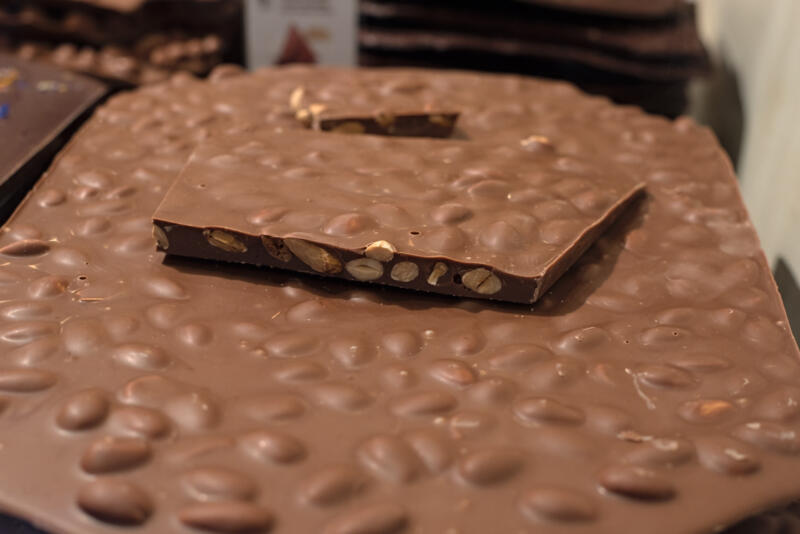
Improper handling and storage practices can significantly contribute to mold growth on chocolate.
For instance, exposing chocolate to fluctuating temperatures can lead to condensation, providing the moisture mold needs to thrive.
Similarly, leaving chocolate exposed to humid environments can also promote mold growth.
To prevent mold, it’s essential to avoid these practices.
Always store chocolate in a cool, dry place with a stable temperature.
If you’re storing chocolate in a refrigerator, ensure it’s well-wrapped to prevent moisture from condensation.
Signs of Mold on Chocolate
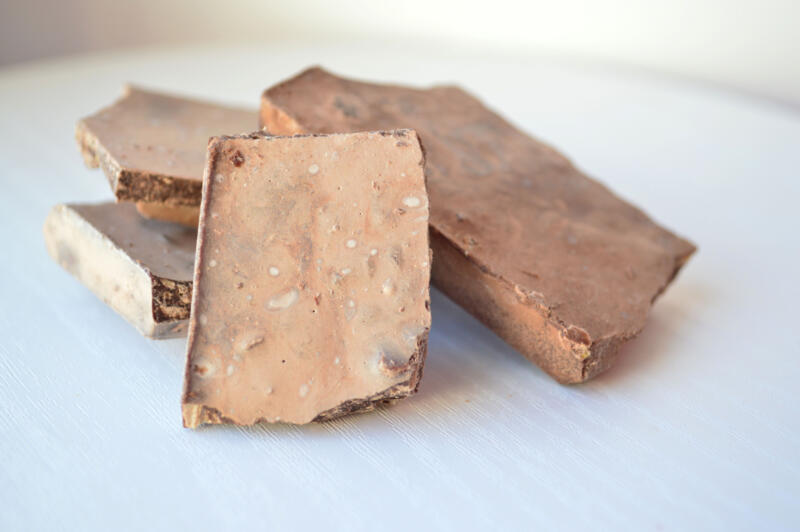
Identifying mold on chocolate can be tricky, especially since some signs of aging or poor storage can be mistaken for mold.
However, there are a few telltale signs that can help you determine whether your chocolate has mold or not.
Green, White or Black Spots
One of the most obvious signs of mold on chocolate is the presence of green, white, or black spots on the surface.
These spots are colonies of mold that have grown large enough to be visible to the naked eye.
Green mold is typically a sign of Penicillium or Aspergillus species, while black spots can indicate Cladosporium.
White mold, on the other hand, can be a variety of species.
The conditions that promote their growth are generally the same: warmth, moisture, and a food source.
Chalky Layer or Crystalized Sugar Coating
Sometimes, you might notice a white, chalky layer on your chocolate. This is not mold but rather a phenomenon known as bloom.
Bloom can be either fat or sugar bloom, both of which are caused by changes in the chocolate’s structure due to temperature fluctuations.
Fat bloom results in a white or grayish film on the surface of the chocolate, while sugar bloom appears as a rough, grainy coating.
Both types of bloom can cause the chocolate to soften or become gritty, but they do not pose a health risk like mold does.
Store your chocolate in a stable, cool environment to prevent bloom, and always keep it in an airtight container or wrapper.
Using high-quality ingredients can also help reduce the risk of bloom.
Unpleasant Odor
Another sign of mold on chocolate is an unpleasant odor.
Chocolate is susceptible to capturing surrounding odors, which can occasionally give it an undesirable scent.
If your chocolate smells musty, sour, or just plain strange, it could be a sign of mold.
This absorption of odors can be particularly noticeable if the chocolate has been stored near strong-smelling savory foods.
Additionally, if the chocolate has passed its best-by date, it may develop an off smell due to spoilage.
Discoloration or White Bloom on the Surface
Discoloration or white bloom on the surface of chocolate is another common issue.
This is typically caused by the cocoa butter in the chocolate improperly solidifying after melting. It leads to a white or grayish coating on the surface.
It’s important to note that this bloom is not mold, and the chocolate is still safe to consume.
However, the texture and appearance may be off-putting.
You can fix this issue by re-tempering the chocolate at home, which involves carefully melting and cooling the chocolate to encourage the cocoa butter to solidify in a more uniform way.
Softening of the Chocolate Product
The softening of a chocolate product can be a sign of several issues:
- Improper tempering
- High ambient temperatures
- Presence of too much cocoa butter.
Improper tempering can lead to a softer texture, as the cocoa butter crystals are not properly aligned.
High ambient temperatures can cause the chocolate to melt and then solidify into a softer texture.
Excess cocoa butter can also lead to a softer texture, as cocoa butter is softer than the cocoa solids in chocolate.
To maintain the firmness and texture of your chocolate, it’s important to temper it properly and store it in a cool, dry place.
This will aid in keeping your chocolate tasty and free from mold.
Preventing Mold Growth On Chocolate
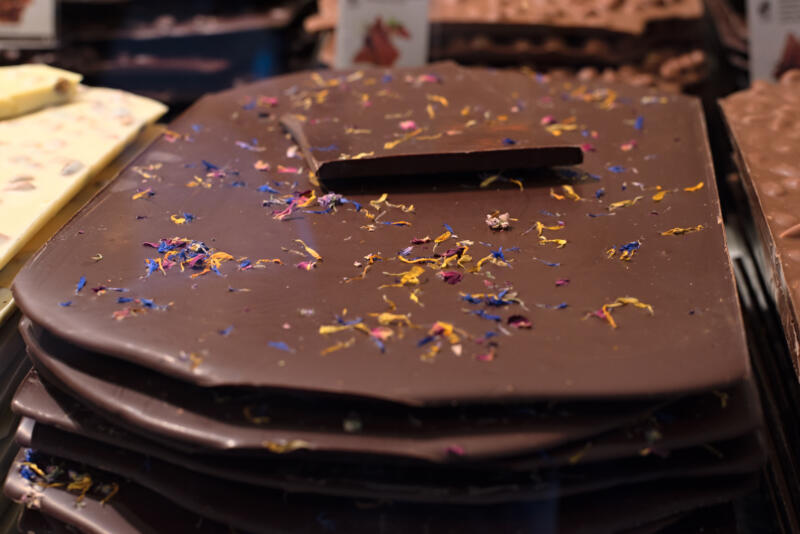
While it’s important to know how to identify mold on chocolate, prevention is always better than cure.
By taking a few simple steps, you can significantly reduce the risk of mold growth on your chocolate and ensure that it stays fresh and delicious for as long as possible.
Choose Quality Ingredients
One of the best ways to prevent mold growth on chocolate is to choose high-quality ingredients.
High-quality ingredients, such as cocoa butter and cocoa beans, have lower moisture content and are less prone to mold.
Using fresh and reputable sources of chocolate is also crucial. Not only will this result in better-tasting chocolate, but it can also help prevent mold growth.
Remember, the quality of your chocolate is only as good as the quality of your ingredients!
Store in an Airtight Container or Wrapper
Storing chocolate in an airtight container or wrapper is another effective way to prevent mold growth.
Exposure to air and moisture can create a hospitable environment for mold to develop on chocolate.
By keeping your chocolate sealed, you can keep it fresh and mold-free for longer.
Health Risks of Consuming Moldy Chocolate
Consuming moldy chocolate is not just unpleasant – it can also pose health risks.
Mold exposure can lead to a variety of symptoms, including allergic reactions, respiratory issues, and digestive problems.
Allergic reactions to mold can include symptoms like sneezing, itching, and rash.
Respiratory issues can range from a runny nose and cough to more serious conditions like asthma attacks.
Digestive problems can include nausea, vomiting, and diarrhea.
In the long term, consuming moldy food can lead to more serious health issues, including immune system suppression and lung infections.
Therefore, it’s always best to err on the side of caution and avoid consuming moldy chocolate.
Closing Thoughts
We’ve covered a lot of ground in this article, from the different types of mold that can appear on chocolate to its causes and signs, and finally, how to prevent it.
Remember, the key to keep your favorite chocolate fresh is proper storage and using high-quality ingredients. Don’t let mold ruin your chocolate experience!
Try out these techniques and see the difference they can make.
And as always, we’d love to hear from you.
Have you tried these methods? Do you have any questions or comments?